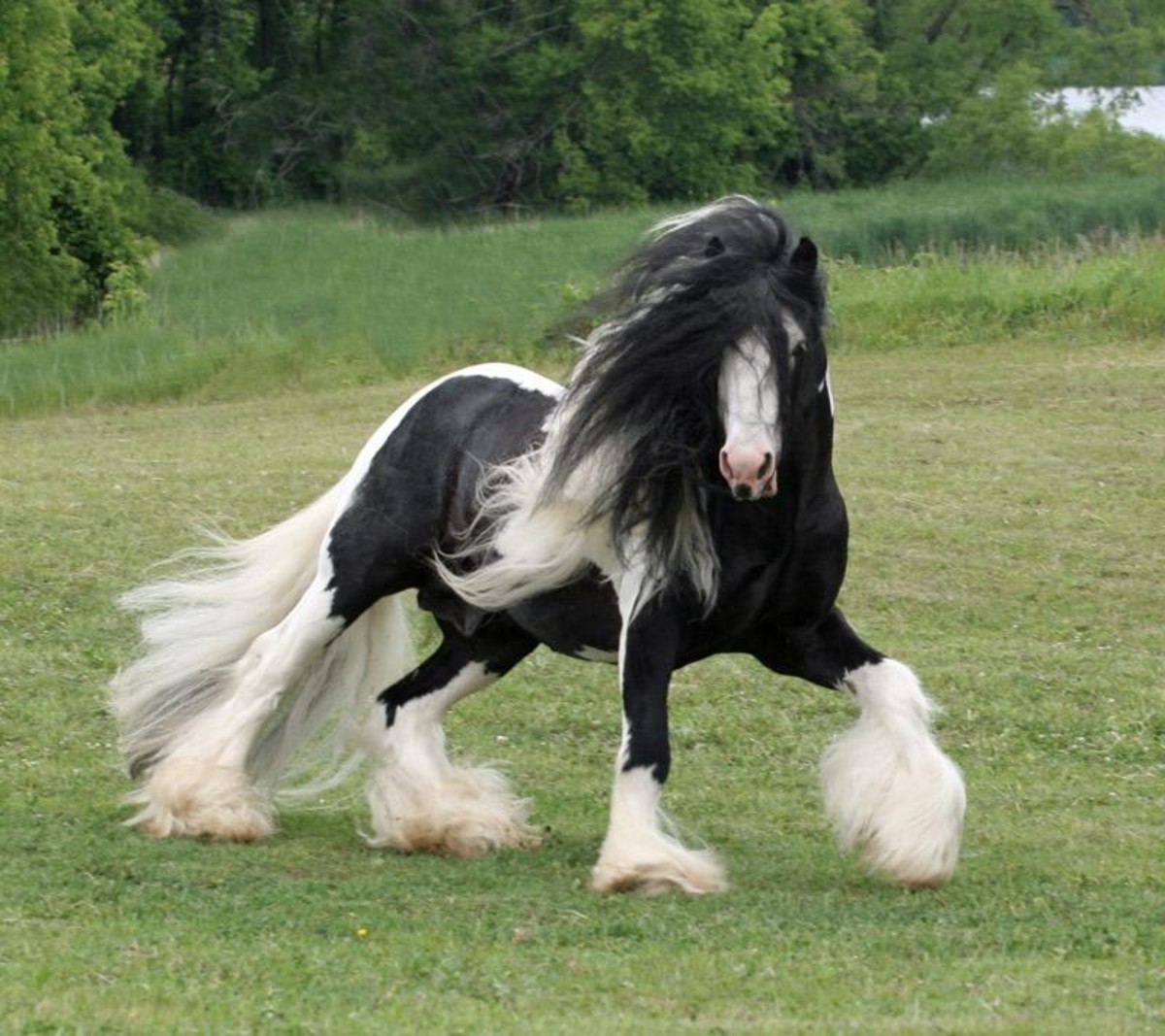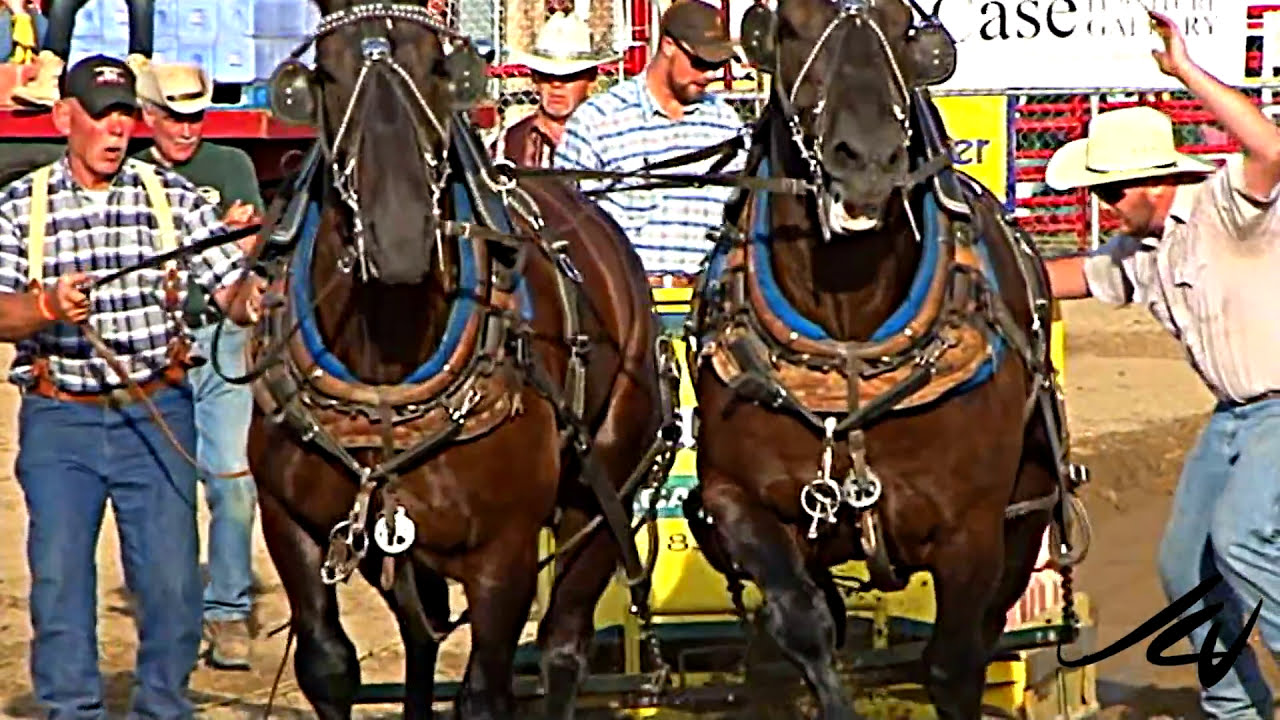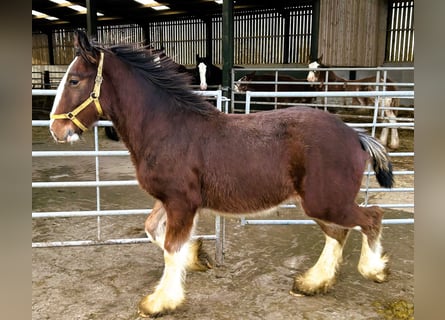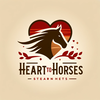Are you looking for the differences of Belgian Draft Horse vs Clydesdale. Belgian Draft Horses and Clydesdales are two of the most well-known and beloved horse breeds in the world. Both are large, powerful, and have beautiful feathering on their legs. However, many people may not be aware of the differences between these two magnificent equines.
In this article, we will explore the characteristics, history, uses, and common misconceptions of Belgian Draft Horses and Clydesdales.
Seemore: Can Horses Eat Grapes? – All Important Things You Should Know
Contents
- 1 Characteristics of Belgian Draft Horses
- 2 History of Belgian Draft Horses
- 3 Uses of Belgian Draft Horses
- 4 Common Misconceptions about Belgian Draft Horses
- 5 Characteristics of Clydesdales
- 6 History of Clydesdales
- 7 Uses of Clydesdales
- 8 Common Misconceptions about Clydesdales
- 9 FAQs: Belgian Draft Horse vs Clydesdale
- 10 Conclusion: Belgian Draft Horse vs Clydesdale
Characteristics of Belgian Draft Horses
Size and Appearance
Belgian Draft Horses, also known as Brabant or Belgians, are one of the largest horse breeds in the world. They can stand up to 17 hands tall and weigh over 2,000 pounds. Their most distinctive feature is their enormous size and strength, with wide chests, muscular bodies, and thickly feathered legs.

In terms of appearance, Belgian Draft Horses have a massive head with a straight profile, small ears, and kind eyes. They have a thick, long mane and tail, and their coat can be any shade of chestnut, sorrel, bay, or roan. Some may even have white markings on their face and legs.
Temperament
Despite their intimidating size, Belgian Draft Horses are known for their gentle and docile nature. They have a calm and willing temperament, making them ideal for inexperienced riders. They are also highly intelligent and eager to please, making them easy to train and handle.
Their inherent calmness and patience also make them suitable for various activities, including farm work, driving, and riding. They have a strong work ethic and are known to be reliable and steady workers.
History of Belgian Draft Horses
Origin
Belgian Draft Horses originated in the region of Brabant, Belgium, dating back to the middle ages. They were initially bred to be warhorses, carrying knights into battle. However, with the advancement of technology and the decline of warfare on horseback, their use shifted to agriculture.

Popularity
Belgian Draft Horses became popular in Europe during the 1800s when they were used as working horses on farms. They were also imported to America during this time, where they quickly gained popularity for their strength and endurance.
Their popularity peaked in the early 1900s, where they were used extensively for agricultural purposes and in transportation industries. However, with the rise of tractors and other machinery, their numbers dwindled, and they became a rare breed.
Uses of Belgian Draft Horses
Farm Work
Belgian Draft Horses are primarily used for farm work, such as plowing fields, hauling heavy loads, and pulling carriages. Their immense size and strength make them ideal for these tasks, and their gentle nature allows them to work comfortably alongside humans.

Showmanship
Aside from their practical uses, Belgian Draft Horses are also popular show horses. They are often used in draft horse shows, where they are judged on their appearance, movement, and confirmation. These shows also showcase the versatility of these magnificent equines, as they can perform various tasks, including pulling wagons and logs, and even riding with proper training.
Common Misconceptions about Belgian Draft Horses
They are Lazy
One common misconception about Belgian Draft Horses is that they are slow and lazy due to their large size. However, this is far from true. While they may not move as fast as lighter breeds, they have incredible strength and endurance, making them perfect for tasks that require heavy pulling or hauling. They can also be trained for riding, and many owners enjoy leisurely trail rides with their Belgian Draft Horses.
They are Dumb
Another misconception about Belgian Draft Horses is that they are not intelligent due to their size. However, this is also false. These equines are highly intelligent and have a strong work ethic. They can quickly learn and excel in various tasks, making them a valuable asset on any farm or as a show horse.
Characteristics of Clydesdales
Size and Appearance
Clydesdales, originating from Scotland, are also one of the largest horse breeds in the world. They can stand up to 18 hands tall and weigh over 2,200 pounds. They are known for their muscular bodies, deep chest, and feathered legs, which give them a majestic and powerful appearance.

In terms of appearance, Clydesdales have a broad head with a straight profile, large eyes, and small ears. They often have a white blaze on their face and white markings on their legs. Their coat can be any shade of bay, brown, black, or roan.
Temperament
Like Belgian Draft Horses, Clydesdales are known for their calm and gentle nature. They have a friendly and sociable personality, making them excellent companions and easy to handle. They are also highly intelligent and respond well to training.
Clydesdales also have a playful side, which is why they have been used as parade horses and in promotional events for popular beer brands.
History of Clydesdales
Origin
Clydesdales were originally bred in the region of Lanarkshire in Scotland, dating back to the 18th century. They were initially developed to be working horses on farms, hauling heavy loads and plowing fields. The breed’s name comes from the River Clyde, which runs through the region where they were first bred.

Popularity
Clydesdales gained popularity in the late 1800s when they were brought to America and used for farming, hauling, and transportation. However, their numbers also declined with the rise of machinery, and they became a rare breed in the early 20th century.
Uses of Clydesdales
Farm Work
Like Belgian Draft Horses, Clydesdales are primarily used for farm work, such as plowing fields and hauling heavy loads. Their strength and endurance make them suitable for these tasks, and their calm nature allows them to work comfortably alongside humans.
Showmanship
Clydesdales are also popular show horses, especially in draft horse shows. They are judged based on their appearance, movement, and confirmation. These events also showcase their versatility, as they can perform various tasks, including pulling wagons and carriages and riding with proper training.
Common Misconceptions about Clydesdales

They are Aggressive
One common misconception about Clydesdales is that they are aggressive due to their size and strength. However, this is not true. These equines have a gentle and docile nature and are known to be easy to handle. Like any horse breed, they may exhibit certain behaviors if not trained properly, but overall, they are not a naturally aggressive breed.
They are High-Maintenance
Another misconception about Clydesdales is that they are high-maintenance due to their large size and feathered legs. While they do require regular grooming to maintain their coat and feathering, they do not need any special care compared to other breeds. They do, however, require a larger living space and more food due to their size.
FAQs: Belgian Draft Horse vs Clydesdale
1. What is the difference between Belgian Draft Horses and Clydesdales?
While both Belgian Draft Horses and Clydesdales are large, powerful equines, there are some differences between the two breeds. Belgian Draft Horses have a shorter, thicker neck and a more massive body compared to Clydesdales. They also have a straighter profile, smaller ears, and a thicker mane and tail. In contrast, Clydesdales have a longer, more elegant neck and a slightly narrower body. They have a more concave profile, larger ears, and less feathering on their legs.
2. What are the main uses of Belgian Draft Horses and Clydesdales?
Both breeds were originally bred for farm work, such as plowing fields and hauling heavy loads. However, they are also commonly used for showmanship, including draft horse shows and parades. With proper training, they can also be used for riding and leisure activities.
3. Can Belgian Draft Horses and Clydesdales be ridden?
Yes, both breeds can be trained for riding. While their large size may be intimidating, they have a gentle nature and are suitable for inexperienced riders. They are often used for trail rides and leisurely riding activities.
4. How do you care for Belgian Draft Horses and Clydesdales?
Both breeds require regular grooming and maintenance like any other horse breed. They need proper nutrition, exercise, and veterinary care. Their living space should also be spacious enough to accommodate their size comfortably.
5. Which breed makes a better pet?
Both Belgian Draft Horses and Clydesdales make excellent pets, but it ultimately depends on the individual horse’s personality and your preferences as an owner. Both breeds have a gentle and docile nature, making them suitable for families and inexperienced owners. It is essential to do thorough research and spend time with the horse before making a decision.
Conclusion: Belgian Draft Horse vs Clydesdale
In conclusion, while Belgian Draft Horses and Clydesdales may have some similarities, they are two distinct and unique breeds with their own characteristics, history, and uses. Both are magnificent equines that have been beloved by humans for centuries and continue to awe and inspire us with their strength, intelligence, and beauty. Whether it’s for farm work, showmanship, or simply as a companion, both breeds are a valuable addition to the equine world.
